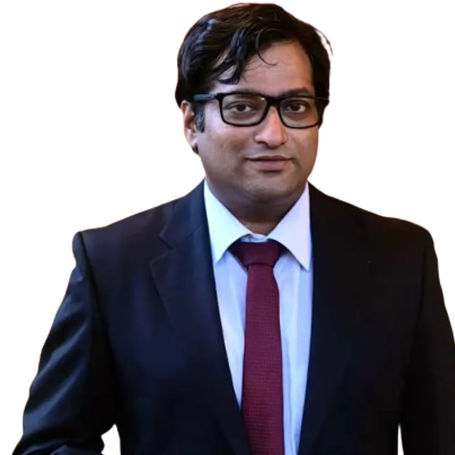The thyroid gland, located below the larynx in front of the neck, produces hormones, including thyroxine (T4) and triiodothyronine (T3), which are responsible for regulating metabolism. Thyroid disorder can impact almost every bodily function, such as the heart, mood, energy levels, metabolism, bones, pregnancy, hormonal balance, menstruation, and fertility. Hence, thyroid imaging is essential.
The imaging tests help diagnose and manage thyroid disorders such as nodules, goitres, and cancers. They provide detailed images of the structure, function, and pathology of the glands, helping make correct clinical decisions and precise interventions for various thyroid conditions.
This article covers the types of thyroid imaging, common findings, side effects, expected future growth, and so on.
Types of Thyroid Imaging Techniques
Various imaging methods are used to diagnose thyroid conditions like cancer, nodules, and dysfunction. Here are the most common thyroid imaging techniques:
- Ultrasound Imaging: Ultrasound is the most prevalent method for thyroid examination. It uses high-frequency sound waves to create real-time images of the gland. Ultrasound or USG helps analyse thyroid nodules and distinguish benign from potentially malignant ones.
- CT Scan: CT (computed tomography) scans are not first-line imaging tests for the thyroid. However, they can be helpful in identifying complications related to the gland, including large goitres or when the disease aggravates.
- MRI Scan: MRI (magnetic resonance imaging) scans are valuable for assessing the soft tissues surrounding the thyroid, including muscles, blood vessels, and the trachea. They are particularly useful in diagnosing complex thyroid conditions, especially when surgery or radiation therapy is required.
- Radioactive Iodine Uptake and Scan: The radioactive iodine uptake (RAIU) test determines the amount of iodine that the thyroid can absorb for hormone production. It involves a small oral dose of radioactive iodine, whose distribution in the thyroid is traced by a camera. This test gives information about thyroid function, size, and shape, which helps diagnose hyperthyroidism and thyroid cancer.
Understanding Thyroid Nodules and Function Through Imaging
Thyroid imaging helps diagnose, evaluate, or monitor various thyroid disorders. Following are the two examinations that include thyroid nodules and thyroid functions:
Evaluation of Thyroid Nodules
Imaging thyroid nodules helps in determining their nature, i.e., whether they are benign or malignant. Generally, ultrasound is used for initial examination, with further imaging or biopsy procedures adopted for abnormal findings. The size, shape, and echogenicity of the nodule are crucial factors in determining whether further intervention is necessary.
Assessment of Thyroid Function and Disorders
Thyroid imaging is also applied to assess thyroid function. For instance, radioactive iodine uptake scans help ascertain whether the thyroid is hyperactive, underactive, or normal. These scans help physicians manage conditions such as hyperthyroidism, hypothyroidism, and thyroiditis through proper functional data that guide treatment decisions.
Interpretation of thyroid images requires a proper understanding of normal and abnormal thyroid analysis and function.
Understanding Normal vs. Abnormal Thyroid Imaging
Normal thyroid imaging indicates a well-defined, homogenous gland that has smooth borders. If nodules are present, they are usually small and characteristically benign. These findings signify a healthy thyroid without any signs of dysfunction or malignancy.
On the other hand, the abnormalities usually include large-sized irregular nodules, heterogeneous echogenicity (i.e., increased or decreased), and calcified nodules, which may be the indicators of malignancy. Abnormal results on radioactive iodine scans are characterised by areas of increased or decreased uptake, which can be associated with hyperthyroidism or hypothyroidism.
CT and MRI scans are not as frequently used in the initial diagnostic process but may indicate structural abnormalities such as goitres, enlarged lymph nodes, or the spread of thyroid cancer to surrounding tissues.
Common Imaging Findings in Thyroid Disease
Imaging studies can provide vital information about the condition when evaluating thyroid disorders. Here are the common findings in thyroid disease:
- For Thyroid Nodules: When thyroid nodules are examined on ultrasound, benign ones typically appear smooth and round. In contrast, malignant ones may show irregular borders or microcalcifications (small flecks of calcium that appear on an ultrasound image).
- For Goitres: When checking through an ultrasound or CT scan, goitre appears as an enlargement of the thyroid gland. Goitres can be caused by iodine deficiency, Hashimoto's thyroiditis, or Graves' disease.
- For Thyroid Cancer: Thyroid cancer can present as a solid, hypoechoic (darker) nodule with irregular borders or microcalcifications on ultrasound, often requiring further diagnostic investigation.
Role of Thyroid Imaging in Diagnosing Disorders
Thyroid imaging forms an integral element in diagnosing an extensive range of thyroid disorders, from minor conditions to cancerous growths:
Detecting Thyroid Cancer
Thyroid cancer is mostly diagnosed using abnormal nodules seen on imaging tests. The first line of imaging is ultrasound, the findings of which might necessitate a nodule to be further assessed as suspicious of malignancy.
Such features include irregular margins, calcifications, and increased vascularity, which may lead to a biopsy to prove malignancy. A radioactive iodine scan can also be useful with the suspicion of cancer for staging the disease assessment of metastases and treatment planning.
Identifying Goitres and Thyroiditis
Ultrasound imaging can also detect goitres or enlarged thyroids. A goitre can indicate several underlying illnesses, such as iodine deficiency, autoimmune thyroid disease, or multinodular thyroid disease.
It can also be detected by ultrasound or radioactive iodine scanning. Hashimoto's thyroiditis cases may demonstrate an enlarged thyroid or reduced iodine concentration capability.
Advances in Thyroid Imaging
Modern innovations in thyroid imaging have dramatically improved diagnostic capacity.
- High-resolution ultrasound with elastography assists in discrimination between benign and malignant nodules.
- F-18 FDG PET/CT (Fluorine-18 Fluorodeoxyglucose Positron Emission Tomography/Computed Tomography) plays a significant role in diagnosis when the cancer of the thyroid does not take up iodine or has recurred.
- Scintigraphy with Iodine-131 assists in treating DTC (Diagnostic Trouble Code).
- Advanced methods such as SPECT (Single Photon Emission Computed Tomography), fusion imaging, and photoacoustic analysis (PAI), employing laser pulses and ultrasound, provide a better assessment and more insight into thyroid pathologies.
These techniques significantly enhance both diagnostic accuracy and patient care.
Risks and Side Effects in Thyroid Imaging
Although thyroid imaging methods are quite safe and free of side effects, there are some cases when these problems arise. Here are some common side effects that can appear in thyroid imaging:
- Radiation Exposure: During thyroid scans, radiation exposure is very low and typically has no side effects. However, pregnant or nursing women are often advised to avoid this test, as radiation can affect the foetus or breastfed child.
- Injection Site Discomfort: Discomfort at the injection site may occur but will probably clear up within a few days.
- Allergic Reaction: Extremely rare allergic reactions to iodine-based radiotracers can occur but are usually mild.
Future Directions in Thyroid Imaging
The future of thyroid imaging promises further development towards increased precision, efficiency, and safety in diagnosing and caring for patients. Here are the expected thyroid imaging techniques:
- Advanced Imaging Technologies: Advanced gamma cameras and 3D imaging can provide clearer and more detailed thyroid images.
- Radioactive Markers: With radioactive markers, the targeting of the thyroid tissue is improved, thus improving diagnosis. For example, small clusters of medullary thyroid cancer cells can be detected with gallium Ga 68-Dotatate in PET scans.
- Advancements in Ultrasound: The use of tissue harmonic imaging (THI) improves image clarity at higher frequencies.
Conclusion
Thyroid imaging has been essential in the diagnosis and management of thyroid disorders. It provides crucial information on the evaluation of nodules, assessment of thyroid function, and detection of cancer.
With minimal side effects, thyroid imaging is considered one of the best diagnostic methods in the healthcare system. It leads to early detection and treatment of thyroid disorders. In the future, thyroid imaging will have much to offer in enhancing patient care and clinical decision-making.
Consult Top Doctors For Thyroid Imaging Risks

Dr. Nithin Reddy Modhugu
Endocrinologist
6 Years • MBBS, MD (General Medicine), DNB (Endocrinology)
Hyderabad
Dr. Nithin's Endocrine Clinic, Hyderabad
50+ recommendations

Dr. Gayatri S
Endocrinologist
4 Years • Suggested Qualifictaion- MBBS, MD (Internal Medicine), DM (ENDOCRINOLOGY)
Nellore
Narayana hospital, Nellore
Dr. Shiva Madan
Endocrinologist
10 Years • MBBS , MD (General medicine) , DM (Endocrinology)
Bikaner
Sushma diabetes and Endocrine center, Bikaner

Dr. Venkata Rakesh Chintala
Endocrinologist
8 Years • MBBS,MD( GEN MEDICINE), DM ( ENDOCRINOLOGY)
Krishna district
Sanjeevani Hospital, Krishna district

Dr. Arunava Ghosh
General Physician/ Internal Medicine Specialist
9 Years • MBBS,MD(GENL.MED.),DM(ENDOCRINOLOGY)
Kolkata
VDC Clinic, Kolkata
Consult Our Endocrinologist For More Information

Dr. Nithin Reddy Modhugu
Endocrinologist
6 Years • MBBS, MD (General Medicine), DNB (Endocrinology)
Hyderabad
Dr. Nithin's Endocrine Clinic, Hyderabad
50+ recommendations

Dr. Gayatri S
Endocrinologist
4 Years • Suggested Qualifictaion- MBBS, MD (Internal Medicine), DM (ENDOCRINOLOGY)
Nellore
Narayana hospital, Nellore
Dr. Shiva Madan
Endocrinologist
10 Years • MBBS , MD (General medicine) , DM (Endocrinology)
Bikaner
Sushma diabetes and Endocrine center, Bikaner

Dr. Venkata Rakesh Chintala
Endocrinologist
8 Years • MBBS,MD( GEN MEDICINE), DM ( ENDOCRINOLOGY)
Krishna district
Sanjeevani Hospital, Krishna district

Dr. Arunava Ghosh
General Physician/ Internal Medicine Specialist
9 Years • MBBS,MD(GENL.MED.),DM(ENDOCRINOLOGY)
Kolkata
VDC Clinic, Kolkata
